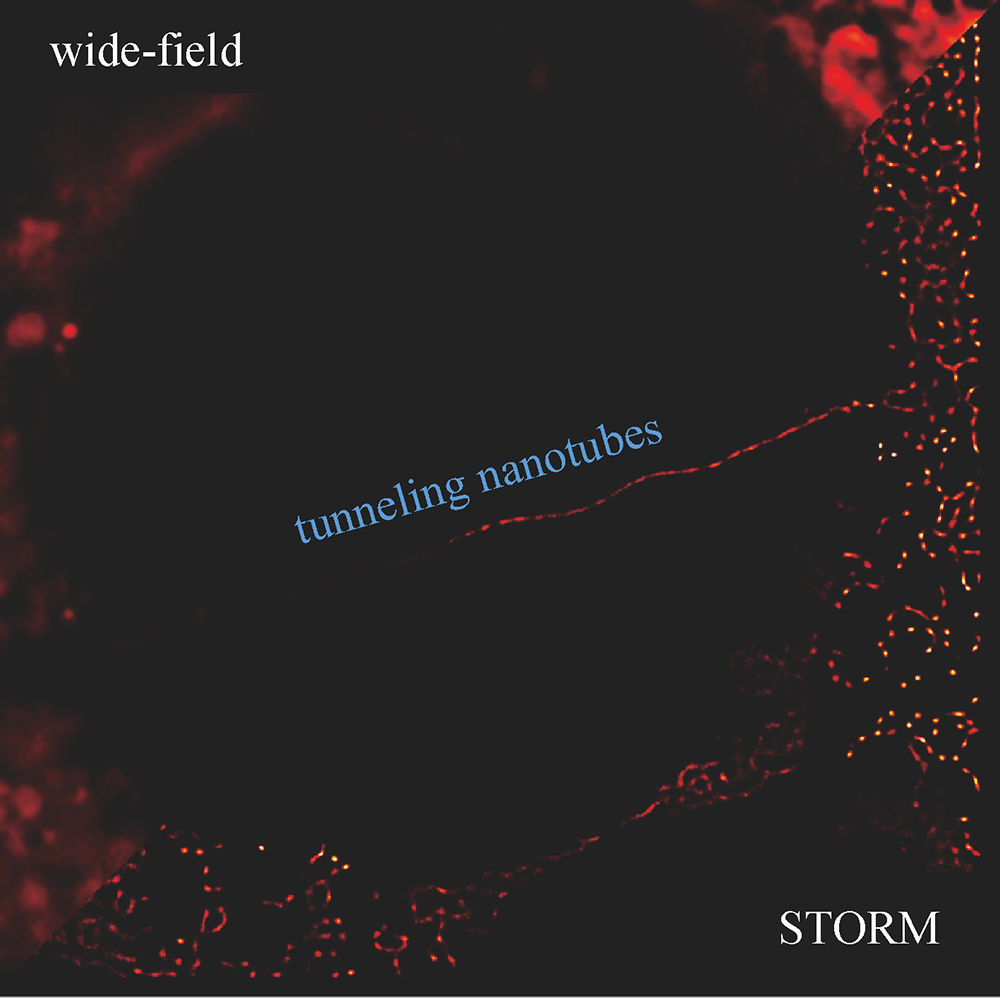Intercellular communication is essential for tissue homeostasis, specific cell functions, and responses to external stimulus. Cell–cell communications typically occur through various processes, such as diffusible factors, including cytokines and chemokines, secreted microvesicles, and direct passage through gap junctions [
1]. Recently, a new impressive intercellular communication pathway was found that allows long-distance cell–cell contacts via tunneling nanotubes (TNTs) between these cells, which was initially reported in rat pheochromocytoma (PC12)-derived cells [
2] and later in other types of cells [
2–
7]. The TNTs connecting two cells exhibit long tubular structures with diameters of 50–1500 nm and lengths of tens to hundreds of microns, which maintain a continuous cytoplasm membrane between the connecting cells, thus allowing the transportation of numerous cellular components, such as proteins, RNAs, viruses, and organelles, from one cell to another [
8–
10]. Generally, actin is included in the central composition and a membrane is wrapped outside, which is typically part of the cell membrane. Additionally, TNTs play distinct roles in the modulation of cell death involved not only in the delivery of injured cells [
9–
12] but also in enhancing the lysis of distant cells [
13]. Thus, addressing the dynamic changes of such TNTs will be helpful for understanding the exact events of intercellular communication behaviors.







